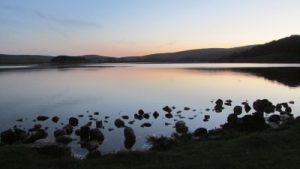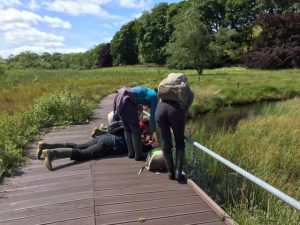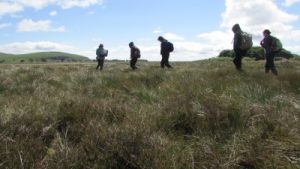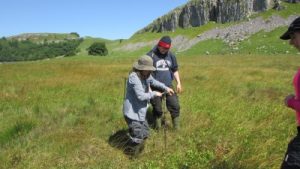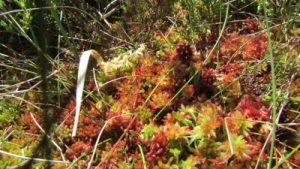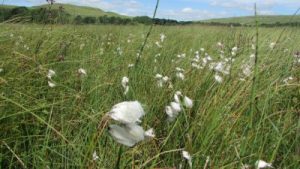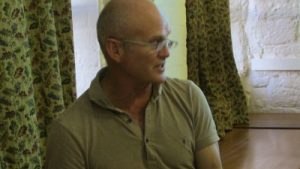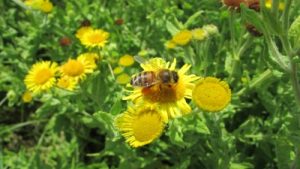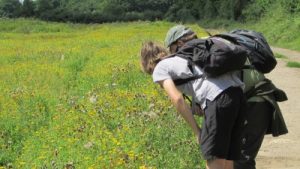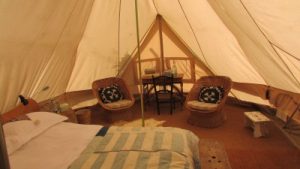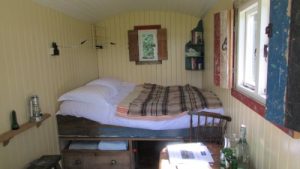
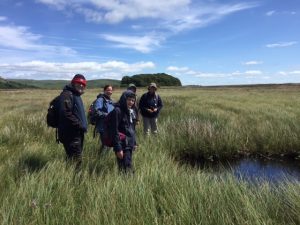 This month, I’ve been to the beautiful FSC Malham Tarn for a superb course on Bogs and Fens run by Ros Tratt. Five of us attended and had a wonderful time surveying the vegetation, learning about the complex mosaics of bogs and fens and also about the geological and hydrological features. If you want to come away feeling that you’ve really learnt something, then book yourself on to this one! We learnt about peat core sampling, recording pH and conductivity, and most importantly, learnt to start to observe the finer nuances of changes in the vegetation stands, and to recognise which plants were indicator species (or not!) for different habitats.
This month, I’ve been to the beautiful FSC Malham Tarn for a superb course on Bogs and Fens run by Ros Tratt. Five of us attended and had a wonderful time surveying the vegetation, learning about the complex mosaics of bogs and fens and also about the geological and hydrological features. If you want to come away feeling that you’ve really learnt something, then book yourself on to this one! We learnt about peat core sampling, recording pH and conductivity, and most importantly, learnt to start to observe the finer nuances of changes in the vegetation stands, and to recognise which plants were indicator species (or not!) for different habitats.
As I last explained, with so much on offer, I have found it hard to hone in on just one or two areas…but I have now decided that I’m a “sphagnum, moss and spider” kind of girl, so feel happier in my skin! (I still want to study everything of course, but this gives me some great parameters within which to work).
I decided to “Feel the fear…” and attend Rich’s QGIS course. I wish my first experience of GIS had been as good as this. At least this time I didn’t become (such) a gibbering wreck! The TOMBio team here in Head Office recently won an award from CIEEM for their development of a QGIS plug in, so I’m in good hands!
The butterfly transect around FSC Preston Montford is a real joy at the moment, with 11 or 12 species each time, and the moth trap is maintaining its popularity for morning meetings.
I had the great experience of assisting Cathy Preston (Growing Confidence Project Officer) and Iain Hartshorne (Tutor) with the pond dipping on their residential week of “Growing Confidence” at Preston Montford. (A group formed specifically for young people aged 11-24 who have particular interest in learning more about the environment). The whole group were hugely enthusiastic and interested in the subject, and the day was finished off with an excellent talk by the wildlife cameraman Simon King! It was great to hear about how he managed to grow his career, and he spoke of the importance of keeping the passion for the subject and remaining true to that passion. (As well as telling some great stories about big cats, orcas and adventures in far off places).
Barely pausing for breath, it was a quick turnaround and a long journey down to Sussex with Charlie, Rich and Sue, to Knepp Estate for the “Biological Recording” course. Knepp is the site of a re-wilding project, and if you don’t know anything about this project, I would really recommend a visit.
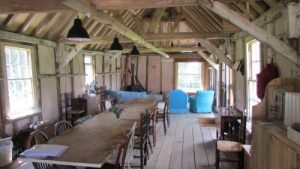
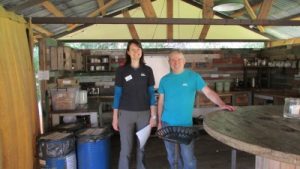 The owners inherited the estate and continued to farm it using fertilizers, pesticides etc. but despite their best efforts, found that they were running at a loss. The ground is very poor, and they were facing some hard decisions, particularly around the future of their dairy herd. They met Frans Vera (a Dutch ecologist who started Oostvaardersplassen) and became very interested in the amazingly rich and diverse wildlife that his project was supporting. Frans had introduced animals which were intended to replicate ancient native species, in an attempt to restore some ecological balance. His ethos is minimally interventionist, and this inspired the creation of Knepp as it is today. Longhorn cattle, Tamworth pigs, Exmoor ponies and Red, Roe and Fallow deer roam and forage freely around the vast estate. They only receive supplementary food in the harshest of winters, and if an animal falls sick, it is treated in quarantine, so that animal waste does not contaminate the land. Hedges have been allowed to grow and the estate is managed as minimally as possible. In the words of Izzy Burrell (owner) “We followed our hearts and stopped fighting nature”. The result is an impressively biodiverse habitat.
The owners inherited the estate and continued to farm it using fertilizers, pesticides etc. but despite their best efforts, found that they were running at a loss. The ground is very poor, and they were facing some hard decisions, particularly around the future of their dairy herd. They met Frans Vera (a Dutch ecologist who started Oostvaardersplassen) and became very interested in the amazingly rich and diverse wildlife that his project was supporting. Frans had introduced animals which were intended to replicate ancient native species, in an attempt to restore some ecological balance. His ethos is minimally interventionist, and this inspired the creation of Knepp as it is today. Longhorn cattle, Tamworth pigs, Exmoor ponies and Red, Roe and Fallow deer roam and forage freely around the vast estate. They only receive supplementary food in the harshest of winters, and if an animal falls sick, it is treated in quarantine, so that animal waste does not contaminate the land. Hedges have been allowed to grow and the estate is managed as minimally as possible. In the words of Izzy Burrell (owner) “We followed our hearts and stopped fighting nature”. The result is an impressively biodiverse habitat.
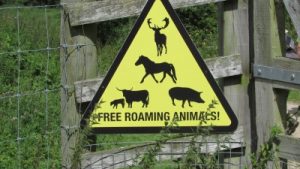 Since following this route 20 years ago, little owls have returned, nightingale numbers have increased, the Essex skipper and small Essex skipper have increased exponentially. The site now has the largest population of purple emperors in the UK, boasts 13 of the 17 bat species, and has nesting peregrines. Every morning I was woken by the yaffle of green woodpeckers; a species with which I am fairly unfamiliar. As you can imagine, this provided wonderful habitat in which to conduct the course, and we all felt amazingly relaxed and “at one” with the ethos of the place.
Since following this route 20 years ago, little owls have returned, nightingale numbers have increased, the Essex skipper and small Essex skipper have increased exponentially. The site now has the largest population of purple emperors in the UK, boasts 13 of the 17 bat species, and has nesting peregrines. Every morning I was woken by the yaffle of green woodpeckers; a species with which I am fairly unfamiliar. As you can imagine, this provided wonderful habitat in which to conduct the course, and we all felt amazingly relaxed and “at one” with the ethos of the place.
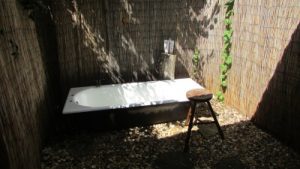 The FSC Biodiversity team did a fabulous job of giving us loads of practical opportunities and engendering in us the confidence to use biological recording whenever we are in the field.
The FSC Biodiversity team did a fabulous job of giving us loads of practical opportunities and engendering in us the confidence to use biological recording whenever we are in the field.
Allow me to show you the amazing accommodation….I’ve never glamped before, but oh wow! As a seasoned camper, it really WAS luxurious!
Many thanks, as ever, to the Field Studies Council, TCV and the Esmee Fairbairn Foundation for all these wonderful opportunities.